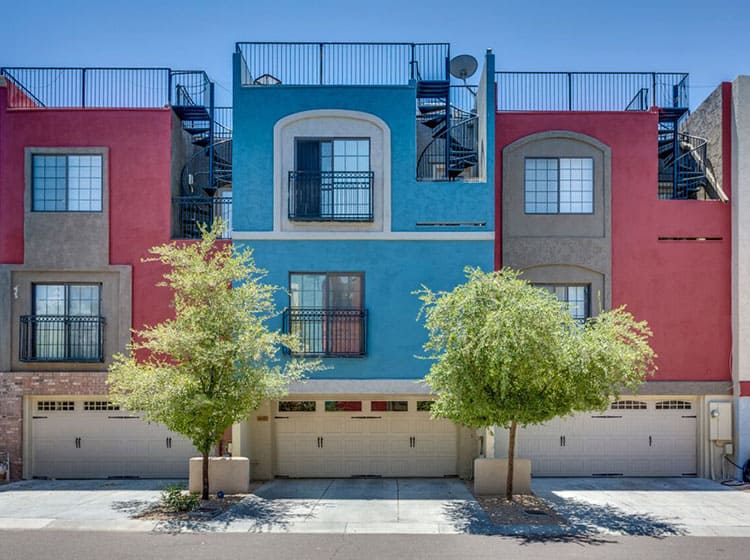Methodical Guide To Establishing Your Wall Surfaces For Painting
Methodical Guide To Establishing Your Wall Surfaces For Painting
Blog Article
Author-Binderup Chaney
When you're prepping your wall surfaces for painting, it's crucial to comply with a systematic procedure to make certain a flawless finish. Beginning by taking a look at the wall surface for any kind of damage; this action can make or break your project. As soon as you have actually determined any issues, cleansing the surface area properly is vital, as an unclean wall surface can impact paint adhesion. Afterwards, commercial interior painters near me 'll need to spot any type of flaws and apply a guide. However there are specific methods and ideas that can elevate your preparation video game-- let's explore those additional to attain the best outcomes.
Assessing Wall Problem
Prior to you get your paintbrush, take a moment to analyze your wall surfaces' condition. Check for any noticeable damages like fractures, openings, or peeling off paint. These flaws can affect just how the paint adheres and looks once it's dry. If you observe any substantial damage, you'll require to focus on repair work prior to diving into painting.
Look closely at the appearance of your wall surfaces. Is the surface smooth, or is there appearance that might need special consideration? Smooth walls usually call for much less prep, while textured surface areas might need even more time to repaint uniformly.
Likewise, consider the previous paint job. If the old paint is glossy, it mightn't permit new paint to stick appropriately. You'll wish to know if your wall surfaces have actually been repainted with oil-based or water-based paint, as this can affect your option of primer or paint.
Lastly, bear in mind of any type of wetness issues. If you see signs of water damages or mold, address these problems quickly to prevent further complications.
Cleaning up the Surface
As soon as you've evaluated the problem of your wall surfaces, the next action is cleaning the surface area. Start by gathering your products: a pail, cozy water, a mild detergent, a sponge or towel, and a scrub brush for harder areas.
Begin on top edge of the wall and work your method down. Mix the detergent with cozy water in your container, after that dip the sponge or towel right into the solution. Wring it out to stay clear of extreme moisture on the wall surfaces.
As you clean up, pay close attention to areas that might've gathered dust, grease, or finger prints. For persistent stains, make use of the scrub brush gently to prevent damaging the paint underneath. Rinse your sponge or fabric frequently in tidy water to stop spreading out dust around.
After cleansing, it's vital to wipe the walls with a damp fabric to eliminate any type of soap residue. This step makes certain a smooth surface area for the brand-new paint to abide by.
Allow the wall surfaces to completely dry entirely before proceeding to the next preparation steps. This detailed cleaning process will certainly help develop a fresh canvas for your paint job, guaranteeing the very best outcomes.
Patching and Priming
Patching and priming are essential action in preparing your wall surfaces for a fresh layer of paint. First, evaluate your wall surfaces for any type of openings, cracks, or blemishes. Use a top quality spackling substance or patching paste to fill up these locations.
Apply https://www.forbes.com/sites/nomanazish/2023/01/28/how-to-make-home-painting-less-stressful/ with a putty knife, smoothing it out so it's flush with the bordering surface area. Enable it to dry completely, and afterwards sand it gently up until it's smooth and also.
As soon as you've patched whatever, it's time to prime. Primer aids secure the covered locations, guaranteeing the paint sticks correctly and provides an uniform surface. Select a primer appropriate for your wall type and the paint you'll be making use of.
Apply the primer using a roller for larger locations and a brush for edges and sides. If your covered areas are substantially huge or permeable, you might intend to use a 2nd layer of guide after the very first one dries out.
After priming, let every little thing completely dry thoroughly prior to moving on to paint. This preparation won't just improve the look of your wall surfaces yet additionally extend the life of your paint work.
Take your time, and you'll be pleased with the results.
have a peek here
By complying with these simple actions, you can attain a smooth and professional finish on your wall surfaces. Begin by assessing their problem, after that tidy and spot any kind of imperfections before applying primer. Bear in mind to allow adequate drying out time and ensure whatever is smooth prior to you dive into paint. With the right preparation, you'll set the stage for a lovely change in your area. Currently, collect your materials, inhale the fresh air, and get ready to paint!
